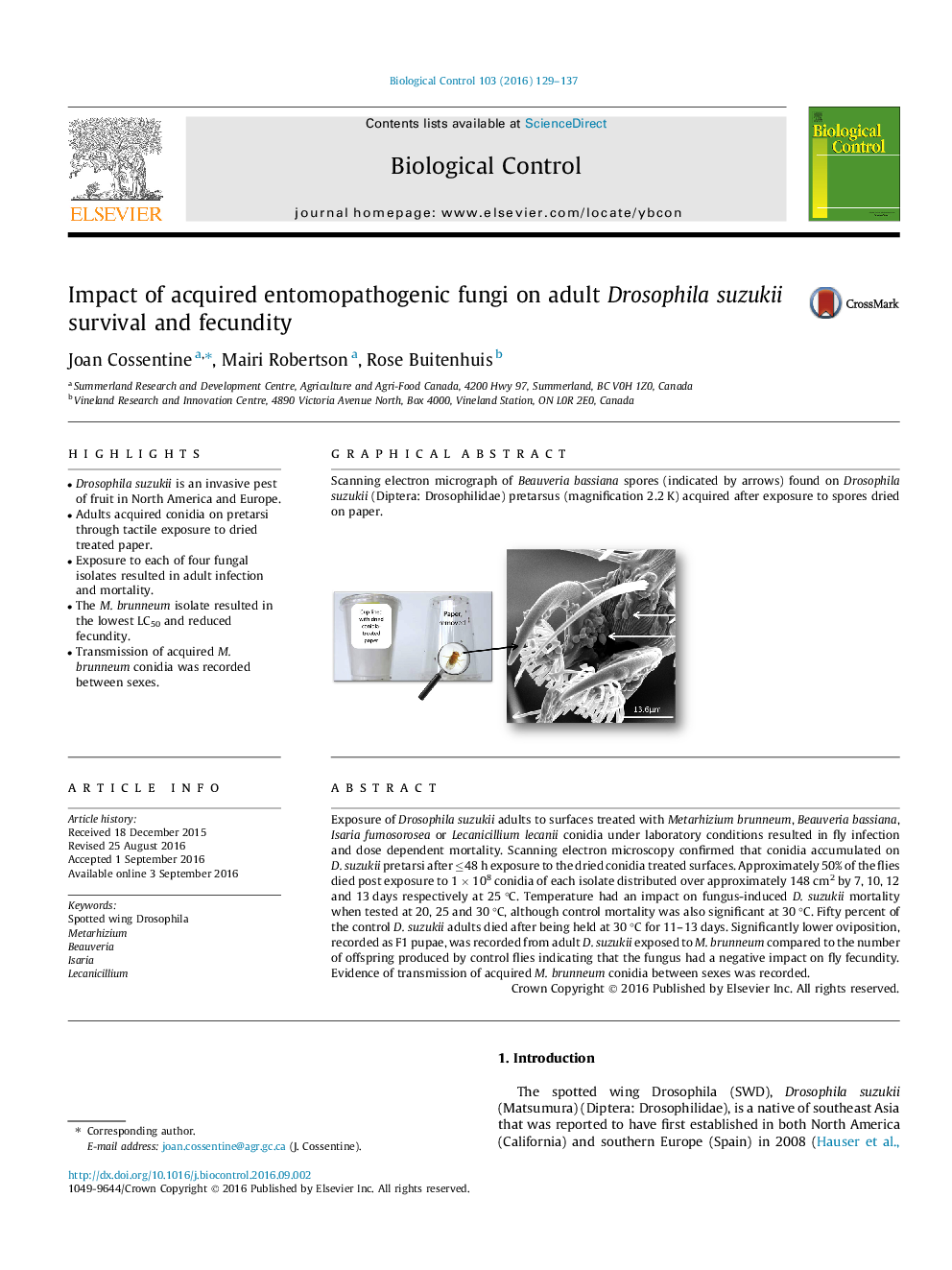| Article ID | Journal | Published Year | Pages | File Type |
|---|---|---|---|---|
| 4503543 | Biological Control | 2016 | 9 Pages |
•Drosophila suzukii is an invasive pest of fruit in North America and Europe.•Adults acquired conidia on pretarsi through tactile exposure to dried treated paper.•Exposure to each of four fungal isolates resulted in adult infection and mortality.•The M. brunneum isolate resulted in the lowest LC50 and reduced fecundity.•Transmission of acquired M. brunneum conidia was recorded between sexes.
Exposure of Drosophila suzukii adults to surfaces treated with Metarhizium brunneum, Beauveria bassiana, Isaria fumosorosea or Lecanicillium lecanii conidia under laboratory conditions resulted in fly infection and dose dependent mortality. Scanning electron microscopy confirmed that conidia accumulated on D. suzukii pretarsi after ≤48 h exposure to the dried conidia treated surfaces. Approximately 50% of the flies died post exposure to 1 × 108 conidia of each isolate distributed over approximately 148 cm2 by 7, 10, 12 and 13 days respectively at 25 °C. Temperature had an impact on fungus-induced D. suzukii mortality when tested at 20, 25 and 30 °C, although control mortality was also significant at 30 °C. Fifty percent of the control D. suzukii adults died after being held at 30 °C for 11–13 days. Significantly lower oviposition, recorded as F1 pupae, was recorded from adult D. suzukii exposed to M. brunneum compared to the number of offspring produced by control flies indicating that the fungus had a negative impact on fly fecundity. Evidence of transmission of acquired M. brunneum conidia between sexes was recorded.
Graphical abstractScanning electron micrograph of Beauveria bassiana spores (indicated by arrows) found on Drosophila suzukii (Diptera: Drosophilidae) pretarsus (magnification 2.2 K) acquired after exposure to spores dried on paper.Figure optionsDownload full-size imageDownload as PowerPoint slide
